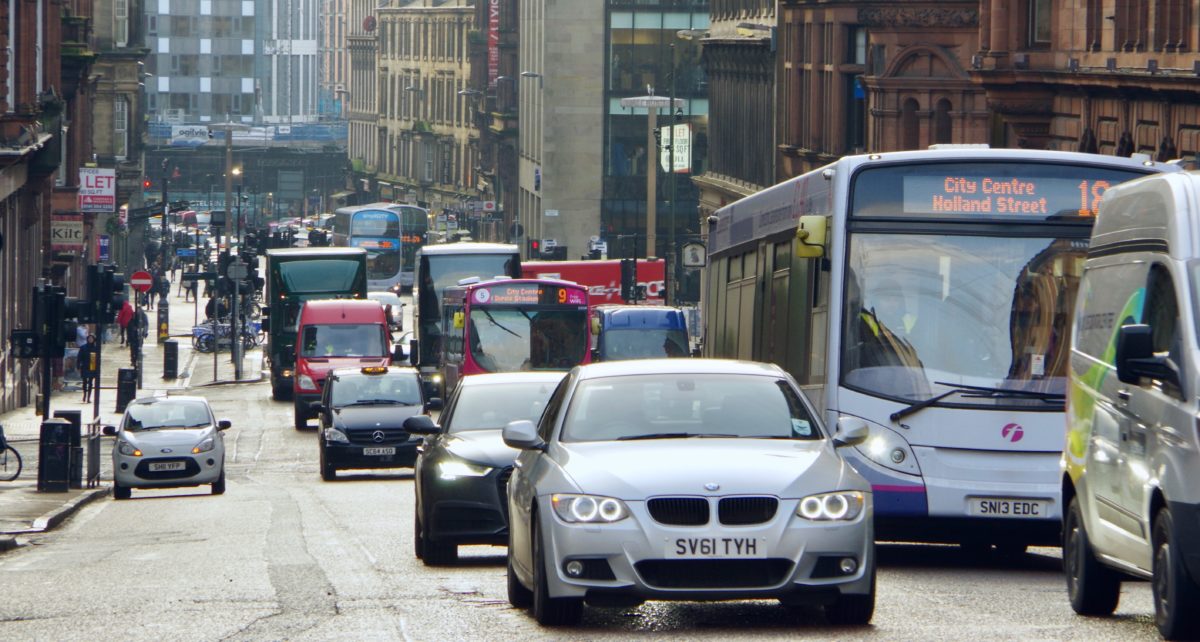
Revealed: Scotland’s most polluted streets
Our research has revealed the most polluted streets and confirms that air pollution remains a public health crisis plaguing Scotland.
We analysed official 2017 data for two toxic pollutants – Nitrogen Dioxide and Particulate Matter – to show recorded pollution levels continued to break Scottish and European air quality standards in ten locations across four towns and cities.

Glasgow’s Hope Street was ranked as Scotland’s dirtiest street yet again. St John’s Road in Edinburgh, Dundee’s Seagate and Dumbarton Road in Glasgow are also repeat offenders are on this list of illegal pollution hotspots.
The situation across the country is showing painfully slow signs of improvement but filthy streets continue to poison our lungs nearly a decade after a legal deadline was due to be met.
Devastating health impacts
Air pollution from traffic fumes has a devastating impact on health, especially on children and people with existing health problems. It is responsible for over 2500 early deaths every year in Scotland and costs the Scottish economy over £1.1 billion annually.
Air pollution has been linked with heart attacks, strokes, and cancers and can also restrict children’s lung development and the growth of unborn babies. It is completely unacceptable to have continued levels of pollution on our streets that are harming our children’s prospects in life.
Low Emission Zones
After years of pressure, the Scottish Government has committed to launch Low Emission Zones in a bid to address this public health crisis. The first LEZ will be up and running in Glasgow by the end of this year, followed by more in Dundee, Edinburgh, and Aberdeen by 2020. The first Zone will be an important test of commitment to tackle air pollution with the rest of Scotland looking to Glasgow to set a high standard.
Air pollution campaigners are calling on Glasgow City Council to ensure that its proposed LEZ restricts the most polluting buses, vans and lorries by the end of this year, with cars and taxis restricted by 2020. The Council will meet in March to pin down the details of its LEZ including when vehicles will have to comply with stricter emissions standards in the city centre.
Low Emission Zones will make a real difference and will improve the health of children growing up in polluted areas. These Zones must be ambitious in their design, apply to the right vehicles and be supported by measures to make public transport, walking and cycling the smarter choice for everyone.
Our society is far too car dependent. The Scottish Government and local councils should work together to promote these sustainable transport alternatives. Only then will we see the step change we need to improve our health and adequately tackle the devastating silent killer that is air pollution.
The sun needs to set on petrol and diesel cars, and fast, if there is to be an end to air pollution.
Or by donating now you can support our campaign to clean up Scotland’s air.
Further details of our analysis can be found at https://foe.scot/press-release/polluted-streets-list-2017/
